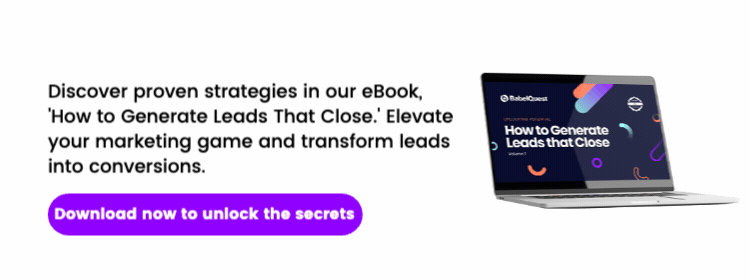Learn all about smart content: what it is, why it's helpful and how you can use it to quickly and efficiently boost your conversion rate and hit your goals.
Imagine you’re browsing a fitness blog (I did say imagine) and you click through to an article about the top 10 exercises to try in 2020. You squat-bench-lunge your way to the end of the read, at which point you discover a CTA encouraging you to download a guide on how to reach your fitness goals in 30 days. Inspired, you download the guide, and because you loved the article so much, you bookmark it or save the link somewhere for later.
Over the course of the next month, you revisit the article frequently in your quest to get fitter (or at least move more than a 10-minute walk to the Tube and back). And while you get lots of repeat value from the read, you’re no longer interested in the CTA. You already have the guide — why download it again?
"The fitness company behind the blog is doing a great job of providing its audience with helpful, motivational content, but when it comes to converting those people into qualified leads, they’re dropping the (gym) ball."
Just think how many more conversion opportunities you presented them with every time you revisited that article.
If only the CTA had offered you a second guide for the next 30 days of your fitness journey, or a checklist to use at the gym, or a case study on their much-loved array of fitness products, any of which would have given them a clearer idea of what you were interested in and how qualified you were as a lead.
The solution? Smart content.
Hi everyone! I’m Loren, a content writer here at BabelQuest. One of the great things about contextual marketing and smart content is being able to target the right people, at the right time, with the right content, whether that’s with smart CTAs, forms or text. What’s great is you’re tailoring the content based on who the visitor is and what they’re looking for. So you really want to leave a lasting impression on them. Anyways, check out the blog down below for more information on smart content. Enjoy!
What is smart content?
Also known as contextual marketing, smart content provides website visitors with individualised experiences based on their preferences and needs. This means adding a personal touch to marketing, providing tailored content based on who a visitor is and what they’re looking for.
“On average, conversion rates are 20% higher when pages use contextual marketing.” HubSpot
Contextual marketing is all about taking into account the visitor’s context, adapting to their needs and giving them the best possible user experience. You’re essentially humanising the website experience, fully aligning content to each individual visitor’s interests.
The difference between static and smart content
Picture presenting different content to multiple visitors scrolling through the same page. When you think about it, someone who’s going to close as a customer in the next few days is going to be looking at your site in a different way compared to someone who’s just stumbled across it via organic search. Creating dynamic content, content that changes based on the individual, means your website becomes valuable at every stage of the buyer's journey.
“94% of businesses agree that a personalized experience is critical to the current and future success of their company.” HubSpot
Static content, on the other hand, sees fewer conversion opportunities. This type of content involves showing visitors the same generic forms, CTAs or text, no matter how many times they visit the same page or where they find themselves in the buyer’s journey. You could be addressing anyone with static content.
With contextual marketing, you’re speaking more directly to each individual website visitor. You’re showing them something new and relevant every time they visit the site, which ultimately leads to higher conversion rates and further opportunities for qualification. With smart content, you’re nurturing the visitors, showing them more content and going a bit deeper into what they need.
Getting hands-on: how to create smart content
Smart content is easy to create in HubSpot, but what many people don’t realise is that they need to figure out the audience and the purpose behind it to get the most value from it. This means determining what you want to do with your smart content and the impact it will have before building it.
“Enough thought has to go into creating smart content to make it work. You have to think of the strategy and the messaging rather than just the tool.” Gem Latimer, BabelQuest’s HubSpot Strategist
Let’s take a look at how to get started with creating smart content:
1. Develop a strategy
An effective contextual marketing strategy hinges on your understanding of what your visitors are most receptive to and what they’re ready for in terms of content. You’re quite literally contextualising the content based on what you know about them.
If someone has already downloaded a guide, there’s no point in showing them the same piece of content again. Does your strategy involve tailoring your smart content to lifecycle stages or a specific campaign? What type of smart content will you use? These are some of the questions to think about.
Different types of smart content include:
CTAs: Best for embedding in articles or other blog content, this is a quick way to build conversions. If a lead has already downloaded an offer, automatically show them a different CTA that makes sense as a follow-up to better engage (and qualify) them.
Forms: A smart form can be something as simple as not asking a returning visitor to fill out all of the same fields every time they give their details. If you have the information, you don’t need to ask again. Progressive profiling can help you to build a bank of useful information about a contact, without overwhelming them with too many fields to fill out on a form.
Text: CTAs and text can be closely linked. If you have a CTA in an article linking to a specific guide, the messaging on the landing page could then change depending on the contact list your visitors fall under (e.g. the content on the page could change based on persona).
2. Identify your audience
Identifying your audience (i.e. the visitors you wish to target) and setting up the proper segments will trigger your smart content to show different messaging to the right people.
For instance, lifecycle stages are one HubSpot property you can choose as the criteria for your smart content. It’s important to note that every business defines these stages differently so you need to make sure the data is accurate in your database.
Let’s look at an example:
You might not know much about a lead, so you present them with a downloadable guide, while an MQL might be more receptive to a consultation or a demo, and a customer is likely someone more interested in expanding their usage of HubSpot. Neither of these three people will be most receptive to the same type of content.
“It makes it easier to build smart content if you already know who you're working with or who you're trying to target and in what preference order.” Gem Latimer
You can also segment your smart content by country (IP address), language, device type (tablet, phone, computer etc.), referral source, or other contact lists you’ve created in HubSpot.
For instance, if you’re creating a smart form based on the type of device, it might be worth removing certain fields to make the form shorter and add drop-down menus instead of free text boxes for visitors using mobile devices. Anything that’s too long and complicated on phones or tablets can make it less user-friendly, leading to the user giving up on it altogether.
3. Think about the data you need
Once you’ve thought of your purpose and audience, make sure you’re asking for the right data. If your smart content is based on job title, but 90% of the people in your database don’t have a job title, it becomes a wasted conversion opportunity as everyone winds up seeing the default version of your smart content. Let’s say you want to segment your smart content by lifecycle stage, but are your contacts in HubSpot assigned to their relevant lifecycle stage? Are these stages set up properly in your CRM?
As you can see, gathering the right data and having the right processes in place to ensure your data is correct is essential for the smart content to have a significant impact on your conversion rates.
See how data is shaping the future of marketing and sales
4. Start small
Remember to start small. You don’t want to overcomplicate your smart content. For instance, someone might use a smart CTA for every single lifecycle stage. It can become a stressful situation trying to keep everything up-to-date and creating the custom text and images to go alongside it. Let’s say you’ve removed an offer from your site and you realise it was hidden in a few smart CTAs. Now what? Going through each CTA to optimise them with different content can become tedious work.
The aim is conversion optimisation, so pick the lifecycle stage or contact list that will make the biggest difference. Start with a default version followed by one rule. Test it out, see if it has an impact on conversion rates, and then maybe you can expand the criteria and add another rule to your smart content.
“Think logically. Who is going to see this? Do these rules make sense? Consider where you can start making the most impact.” Gem Latimer
Visit HubSpot to see how to you can get started with building your own smart CTAs
Get started building your smart content
Are you ready to start smashing your conversion rate goals with smart content? Whether it’s creating smart forms, CTAs or rich text, you can provide your website visitors with meaningful experiences and align your content offers with what is relevant to their needs.
So whether that person is a first-time visitor just looking to get a little fitter in time for the summer or they’re a senior procurement officer in need of a buyer’s guide to your manufacturing products, you can be sure to leave a lasting impression with smart content.
Download our guide ‘How to Generate Leads that Close’ to discover the core areas of an effective inbound marketing strategy to help you generate leads that actually close into business.
Heading
Separated they live in Bookmarksgrove right at the coast of the famous Semantics, large language ocean and many more stuff and more more more


Tom is BabelQuest's Principal Copywriter. He has a PhD in Creative Writing from the University of Southampton and is a novelist with Sparkling Books.




.png?width=50)

.png?width=50)
.png?width=50)


































